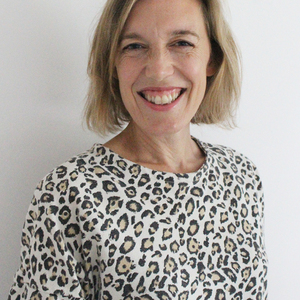Insights
INSIGHTS
All Topics
My Account
Defining digital pillars for small charities
22 Jun 2022by Mary Wessel
We look at where charities should focus their attention at the start of their digital journey and offer some essential device that will help them on their way
As a small charity, you’ll probably need to make your resources go further – especially when it comes to digital. Some bigger charities can jump on every digital and tech trend, but smaller charities need to be more discerning about where to invest their hard-earned cash.
Here are our suggestions for where to focus your energies at the start of your digital journey. It’s worth noting that this isn’t a chronological to do list. Looking at the following core pillars in tandem will help you to build a cohesive digital foundation.
And remember, small consistent steps will get you far.
Communication
With more people working remotely, it’s worth having a combination of tools to communicate – don’t rely solely on email.
For example, you could use email alongside a tool like Microsoft Teams to give you greater flexibility in the way you communicate. Email will give you a familiar way of communicating, while Teams integrates calls and messaging.
As well as organising these chat channels around internal teams, it’s also effective to use them for specific projects or workstreams – that way everyone is kept in the loop.
As well as the big players, like WhatsApp, Zoom, and Microsoft Teams, have a look at lesser-known tools such as Chanty (a collaboration tool which has free plans for up to ten people) and Clickup (a project management tool).
The cloud
Accessing your data or programmes via the internet has some great benefits. For one, it can be a cheaper option for smaller charities – the cloud gives access to tools that would be too costly for an individual charity to develop.
Reduced IT infrastructure investment and lower maintenance costs also make it a good financial option. And employees could potentially use their own personal computers to log in for work, meaning charities save on the cost of computers.
Working in the cloud means that colleagues can access documents anywhere and at any time – giving everyone greater flexibility. It also means you can get new members of staff up-and-running easily.
This is particularly helpful if you’ve a lot of new staff joining at the same time for a short-term campaign, as you can just as easily close their accounts at the end of the project.
Project management
Unlike Post-its and whiteboards, digital project management tools allow everyone working on the project to have up-to-the-minute information from wherever they’re working. They give everyone involved a shared understanding of what needs to be done and by when, as well as making the process transparent. This can be helpful if the project involves people from across your organisation.
While Trello, Monday, and Microsoft Planner are all popular project management tools, Asana is worth looking at for small charities. It offers a free version for teams of up to 15 people, and has over 100 free integrations with other apps, including Microsoft Teams, Slack, Salesforce, and Outlook.
Customer Relationship Management
A good Customer Relationship Management (CRM) tool will bring together information on your donors, volunteers, and audiences, all in one place. So if someone contacts you about wanting to volunteer at a fun run, you’ll instantly know that they regularly donate and have supported your charity for over a decade.
But your CRM is more than just somewhere to organise and store data. Many have features for analysis, reporting and automation – making them a useful and versatile tool for any sized charity. CRMs can help you manage your volunteer teams, report quickly and accurately on a campaign’s impact, and deliver targeted and effective comms through donor segmentation.
There are lots of considerations when choosing which system is right for your organisation, not least cost. We talk you through some of the best options for charities, which includes Blackbaud eTapestry as a good system for smaller charities.
Cybersecurity
In our cyber security survey, UK charities sited cyber security as their third biggest priority (after service delivery and fundraising). But micro charities rated it sixth (behind service delivery, fundraising, governance, IT and finance).
Yet any charity, of any size, can be affected by a cyber breach, which can have devastating financial and reputational costs. And with charities becoming more digital, the threat of attack is greater.
Luckily, there are different types of cyber security systems. One of the most important is endpoint protection software, installed on every end user’s computer. As well as anti-virus protection, it also protects against fraudulent phishing emails and firewalling to help prevent getting access.
Getting your cybersecurity sorted doesn’t have to be daunting or expensive. Our video series can help to get you started, as can the free online resources from the National Cyber Security Centre’s Small Charity Guide. The Charity Digital Exchange also has lots of discounted software options available.
03 Jan 2025by Ioan Marc Jones
Climate change facts you need to know in 2025
03 Jan 2025by Ioan Marc Jones
An A-Z glossary of climate change terms and definitions
Our Events
Charity Digital Academy
Our courses aim, in just three hours, to enhance soft skills and hard skills, boost your knowledge of finance and artificial intelligence, and supercharge your digital capabilities. Check out some of the incredible options by clicking here.



















